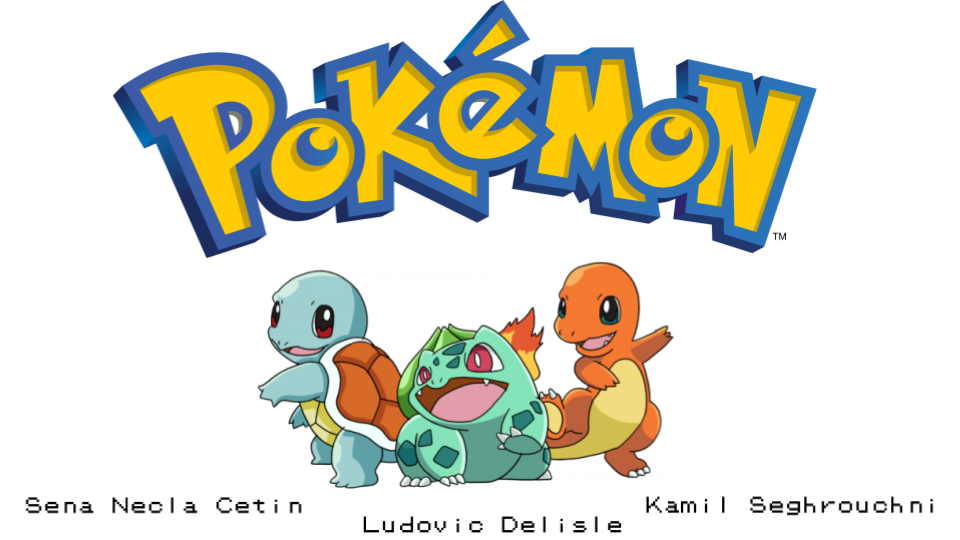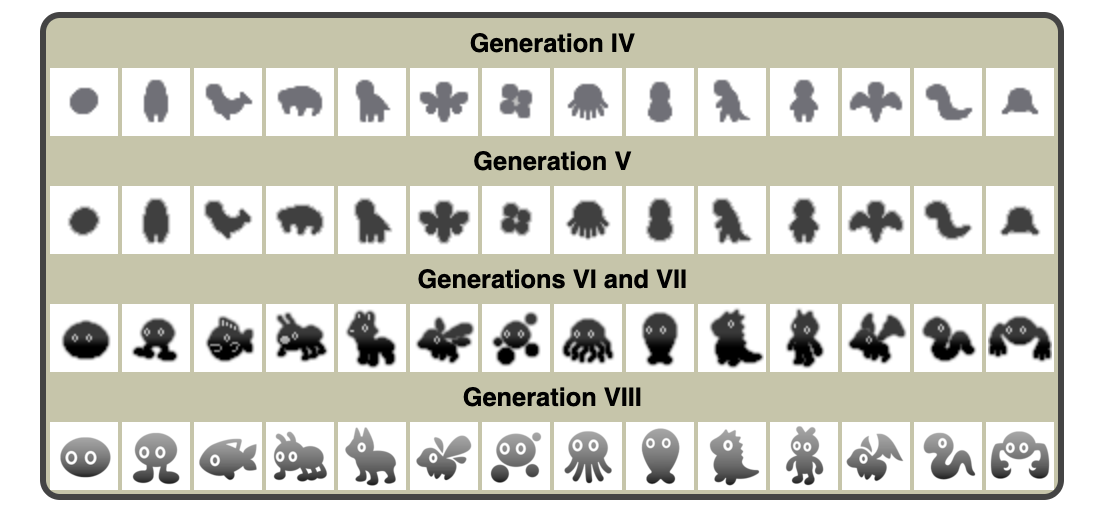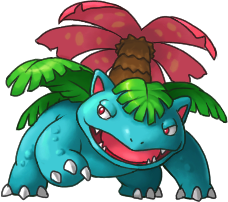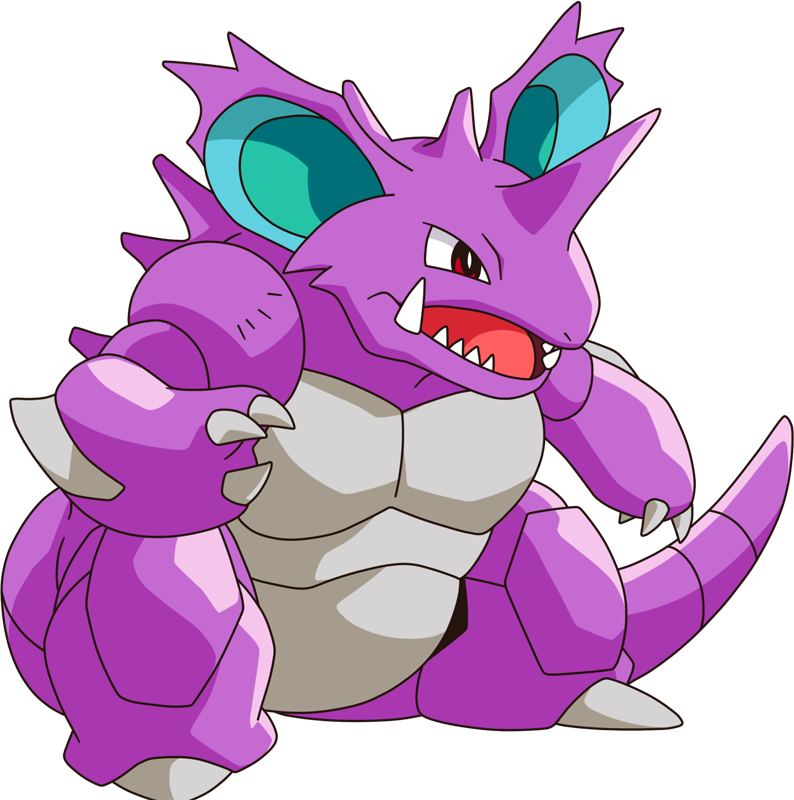
The Pokemon franchise began with a pair of video games, Red and Green, in 1996 and has since become the highest-grossing media franchise of all time. Despite the 24-year mark since its emergence, it is still just as popular with a total of 8 generations in its games that are published every 3-4 years. It has evolved several generations of kids and adults alike with its engaging storylines and challenging battles.
With the everlasting fans of the franchise, Pokemon World Championships are still being held every year. However, after two decades, the debate of the which Pokemon is the best has still not been resolved.
As a generation that has grown with Pokemon games ourselves, we have noticed the lack of data visualizations on battle performance and body style online. Moreover, the existing visualizations looked outdated and non-engaging. Therefore, in this project, we aimed to fuse all the Pokemon data for fans like us and create a fun, holistic, and interactive guide. Enjoy!
Pokemon stats by generations
Which Pokemon stat do you care about the most? Do you favor Pokemon with higher special attack than attack? How does each stat correlate with each other? Does physical appearance have an effect on Pokemon stats? How are types distributed in each generation?
These are only a few of the questions that you may find the answer to with this graph!
Just select an x-axis stat, a y-axis stat, a radius stat, then indicate which generation you would like to view.
Hover over the Pokémon types on the right-hand side to see how they are distributed in the graph.
Hover over any of the bubbles on the graph to see the stats details of the Pokemon as well as their picture.
This visualization is particularly useful for the fans that would like to choose the best Pokemon in battles!
Let’s take the initial version of the graph as an example.
You can see all the Pokemon from generation 1 plotted according to their attack and defense stats with their radius indicating their HP.
Gyarados and Pinsir have their attack superiority whereas Slowbro and Cloyster have their defense superiority.
Water and normal type Pokemon are the most common in terms of quantity in this generation.
The influence of types
How does the choice of a specific ability influence the type of my Pokemon? Whats is the outcome of choosing a water Pokemon on its body style? How will my Pokemon look like if I want him to be white? How is my choice going to be affected by the generation I am looking into?
All these questions can be answered by this bipartite visualization .
Just select which type of comparison you want to make whether you are interested in knowing the relationship between abilities and types, types and body styles, or types and colors. By hovering over a specific feature element (in either displayed features), this figure will give you insights on the outcome of such choice over the type Pokemon feature distribution. Investigation can also be conducted generation-wise to apprehend changes in feature distribution over time. Select your generation using the according toggle and see what happens for your feature of interest.
As Pokemon type is a determinant feature in Pokemon capabilities and aesthetics, the below figure will provide the reader quantitative insights on such relationships. Depending on the reader’s interest in abilities or aesthetic outcome upon type decision, he might favor one generation over the other.
Let’s say the reader is interested in poisonous Pokemon and wants to get insights on the related diversity of Pokemon across generations as well as the capabilities and aesthetic possibilities for such Pokemon. First off, the reader might want to focus on generation 1 as 14% of the most present abilities are poison-related while it does not exceed 6% for the other generations. It is confirmed in the aesthetic comparisons as 19% of the most present body shapes and colors are related to poisonous Pokemon. With that being said, the reader might end up with a purple Pokemon as it is present in 51% percent of the poisonous Pokemons cases. Body shapes are petty much uniformly distributed for that category.
For figure clarity sake, only most represented types, colors, body styles and abilities per generation are shown. The diversity in those features explains the sometimes low displayed percentages.
The influence of visual appearance
Let’s go deeper. As the reader may have gained insights on flying Pokemon color across generations or the various Pokemon types having the ability to levitate, the above visualization will bridge the gap between types abilities and esthetics all together.
If you are wondering what will be the type and abilities of your Pokemon if you want him to be black and have wings, or how many esthetic - types combinaisons you have left upon choosing a telepathic Pokemon in the first generation, this figure will provide the answer.
Moreover, the figure also displays quantitative insights on Pokemon distribution for each pattern or for a specific feature value as the path widths are proportional to Pokemon distribution.
Hover over a given feature value to see the possible left choices for the other feature values. The Pokemon distribution as well as the selected pattern will be displayed at the bottom. The reader can also chose a specific generation as well as a curve shaped display to better apprehend how many Pokemons are left for each pattern. The figure is also made so that the reader can change the order of feature display by shifting them up and down upon dragging, as well as changing feature value upon left and right draggin as well. Moreover, feature value can also be displayed by size or alphabetical order upon clicking on the respective toggle “size” and “alpha” after hovering on the feature.
Let’s get back to our poisonous Pokemons of generation 1. Hovering over the poison type highlights the various combinations of abilities and esthetics among the 33 available Pokemons (representing 18 % of the selected Pokemons of generation 1). Then hovering over the purple color as before reveals the possible body style and abilities combinations for the 14 left Pokemons (representing 8 % of the selected Pokemons of generation 1). Hence the reader will that his left with the abilities - bodyshapes possibilities :
Run-Away -- Bipedal : 1 Pokemon
Poison touch -- Head-arms : 2 Pokemon
Unnerve -- Serpentine : 2 Pokemosn
Poison point -- quadrupled : 2 Pokemon
Poison point -- bipedal-tailed : 1 Pokemon
Hustle -- quandrupled : 2 Pokemon
Inner focus -- two wings : 2 Pokemon
Pokemon explorer
Finally, it is time to put it all together. As abilities and esthetics are important for Pokemon choice, they are not the only features that matters. In fact other categorical ones such as health points (hp), attack points (attack), special defence (sp_defence) and so on exist and provide quantitative informations on Pokemon’s behaviour in combat as well as other general characteristics. Hence, it is important to investigate the different patterns across those features among the Pokemons for the 6 available generations. In fact, some readers might only want to focus on such categories for there Pokemon choice. Highest hp and special attack, with a low likelihood of encounter (low capture rate) have proven to be important features in public choice. For that, the following coordinate visualization will provide answers to the reader in many ways.
First off, its possible to select for more than one feature a given range of values upon clicking and dragging on the corresponding axis range of interest. Such selection will make the figure display the Pokemons name and patterns fitting such range of values. The number of displayed Pokemons is shown on top of the figure. Hence, it is also possible to compare Pokemon distribution for a given subset of values across generations.
The order of features can be changed as well upon left and right click and drag on the feature of interest.
Controls
Click: Click on the figure to display ticks and axis.
Hide Ticks: Click on Hide ticks to hide ticks.
Show Ticks: Click on Show ticks to display back ticks.
Click: Click on the figure to display ticks.
Brush: Drag vertically along an axis.
Remove Brush: Tap the axis background.
Reorder Axes: Drag a label horizontally.
Invert Axis: Tap an axis label.
Remove Axis: Drag axis label to the left edge.
Count, Body Styles
Sample of 25 entries
On the other hand, the reader can search for a specific Pokemon’s pattern upon name entry. Hovering over it will only display its pattern in the foreground.
Pokemon body styles (from left to right) :

head_only
head_legs
with_fins
insectoid
quadruped
four_wings
multiple_bodies
several_limbs
head_base
bipedal_tailed
bipedal_tailless
two wings
serpentine_body
head_arms
Lastly, this visualization bridges the gap between body styles and categorical features. Such relationship investigation can be of use to better apprehend body style influence on the Pokemon’s behaviour.
With that being said, it is time to find our poisonous Pokemon. To chose between the remaining options, we select the possible body types in the first generation and look for the best pattern in terms of attack (above 90) and rareness (low values, capture_rate less than 50). Quadrupled and bipedal_tailed seem to match such conditions giving respectively Venusaur and both Nidoking and Nidoqueen for the bipedal_tailed.
 Venusaur
Venusaur
 Nidoking
Nidoking
 Nidoqueen
Nidoqueen